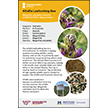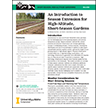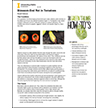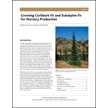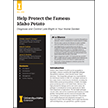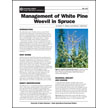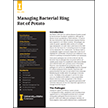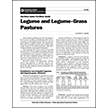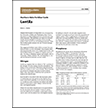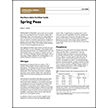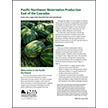Greenhouse and Nursery Crops
The alfalfa leafcutting bee is a vital pollinator for multiple cropping systems, including alfalfa, canola, melons and carrots. This information card provides basic facts about and photographs of...
An Introduction to Season Extension for High-Altitude, Short-Season Gardens
Gardening in high-altitude regions of the arid west is tricky, due to short growing seasons and extreme temperature swings. But this 13-page, colorfully illustrated publication will help you to...
Any gardener gets discouraged when they see a dark, leathery patch develop on the bottom end of their vine-ripened tomatoes. The blemish indicates blossom-end rot, a calcium-deficiency disorder...
Growing Corkbark Fir and Subalpine Fir for Nursery Production
Explores the cultivation of corkbark fir and subalpine fir for use as landscape (corkbark fir only) or Christmas trees. Topics covered include site selection, seeding production, tree establishment...
Help Protect the Famous Idaho Potato: Diagnose and Control Late Blight in Your Home Garden
Potato and tomato plants are susceptible to late blight, a disease caused by a fungal-like pathogen that caused the Irish Potato Famine of 1845–52. The disease is still with us today and continues...
Management of White Pine Weevil in Spruce
In the West the white pine weevil, Pissodes strobi , almost exclusively attacks spruce rather than pine trees. Of major concern to homeowners, nurseries and landscape businesses, the weevil causes...
Managing Bacterial Ring Rot of Potato
Bacterial ring rot, caused by the bacterium Clavibacter sepedonicus, is one of the most destructive potato diseases in the world. Because losses due to stored, decaying potatoes can be substantial,...
Northern Idaho Fertilizer Guide: Legume and Legume-Grass Pastures
Fertilizer improves plant growth and productivity. An entry in the northern Idaho Fertilizer Guide series, this three-page publication offers fertilizer guidelines for established nonirrigated...
Northern Idaho Fertilizer Guide: Lentils
Fertilizer improves plant growth and productivity. An entry in the northern Idaho Fertilizer Guide series, this four-page publication offers fertilizer guidelines for nitrogen, phosphorus,...
Northern Idaho Fertilizer Guide: Spring Peas
Fertilizer improves plant growth and productivity. An entry in the northern Idaho Fertilizer Guide series, this four-page publication offers fertilizer guidelines for nitrogen, phosphorus,...
Pacific Northwest Watermelon Production East of the Cascades
Here are steps to successful commercial watermelon production in the Columbia Basin and other warm-climate regions of the Pacific Northwest. You'll learn best practices for cultivar selection, site...
Potato Mop-Top Virus: Biology and Disease Management
Potato mop-top causes dark, internal blemishes in potatoes. Because it is an emerging disease in the United States and no control measures yet exist, growers need to know the basic facts to...







